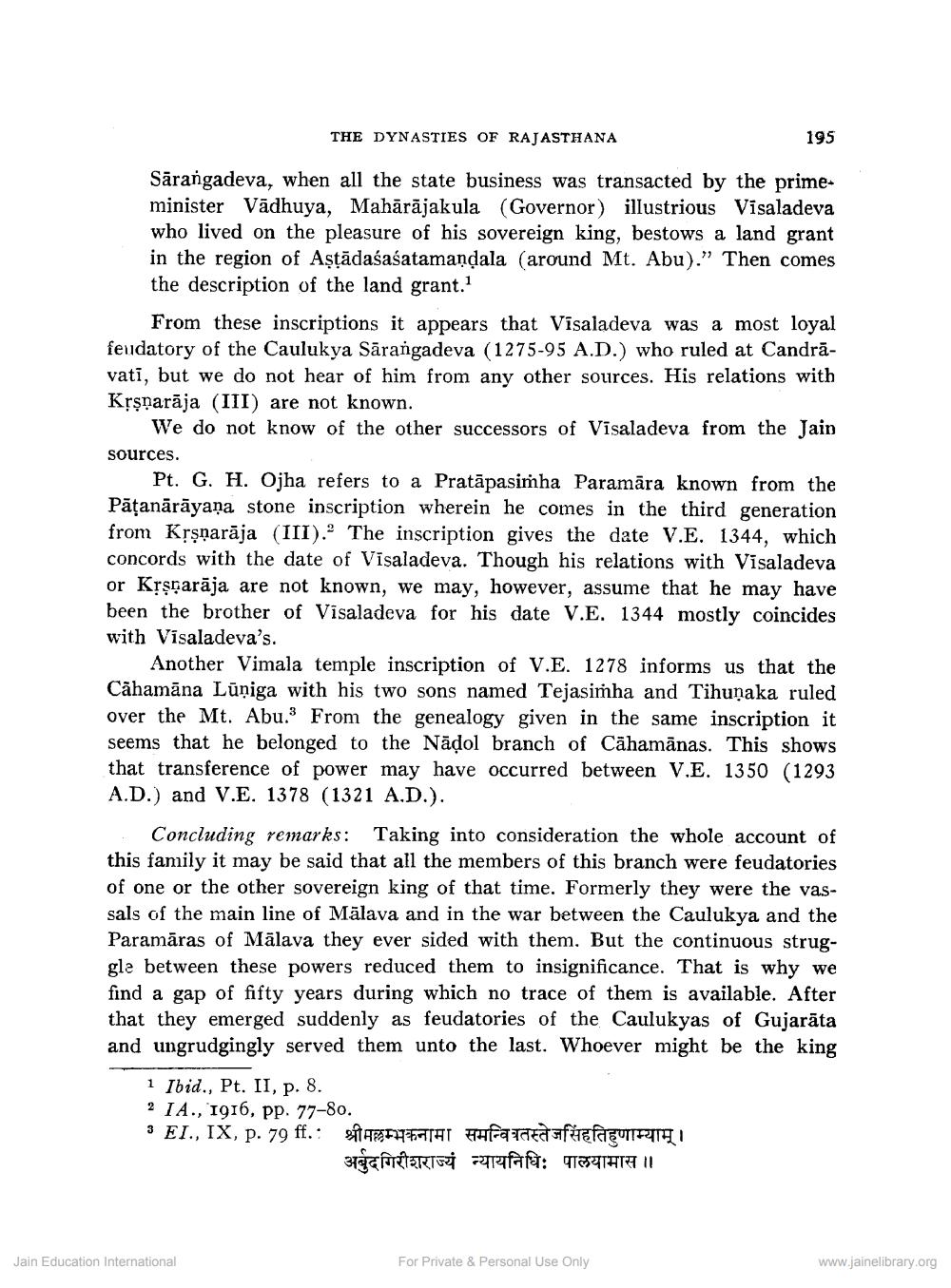________________
THE DYNASTIES OF RAJASTHANA
195
Sārangadeva, when all the state business was transacted by the primeminister Vādhuya, Mahārājakula (Governor) illustrious Visaladeva who lived on the pleasure of his sovereign king, bestows a land grant in the region of Aștādaśasatamandala (around Mt. Abu)." Then comes the description of the land grant.1
From these inscriptions it appears that Visaladeva was a most loyal feudatory of the Caulukya Sārangadeva (1275-95 A.D.) who ruled at Candrāvatī, but we do not hear of him from any other sources. His relations with Krsnarāja (III) are not known.
We do not know of the other successors of Vīsaladeva from the Jain sources.
Pt. G. H. Ojha refers to a Pratāpasimha Paramāra known from the Pāțanārāyana stone inscription wherein he comes in the third generation from Krsnarāja (III).” The inscription gives the date V.E. 1344, which concords with the date of Visaladeva. Though his relations with Visaladeva or Krşnarāja are not known, we may, however, assume that he may have been the brother of Visaladeva for his date V.E. 1344 mostly coincides with Visaladeva's.
Another Vimala temple inscription of V.E. 1278 informs us that the Cāhamāna Lūniga with his two sons named Tejasimha and Tihuņaka ruled over the Mt. Abu. From the genealogy given in the same inscription it seems that he belonged to the Nadol branch of Cāhamānas. This shows that transference of power may have occurred between V.E. 1350 (1293 A.D.) and V.E. 1378 (1321 A.D.).
Concluding remarks: Taking into consideration the whole account of this family it may be said that all the members of this branch were feudatories of one or the other sovereign king of that time. Formerly they were the vassals of the main line of Mālava and in the war between the Caulukya and the Paramāras of Mālava they ever sided with them. But the continuous struggle between these powers reduced them to insignificance. That is why we find a gap of fifty years during which no trace of them is available. After that they emerged suddenly as feudatories of the Caulukyas of Gujarāta and ungrudgingly served them unto the last. Whoever might be the king
1 Ibid., Pt. II, p. 8. 2 I A., 1916, pp. 77-80. 3 EI., IX, p. 79 ff.: ATARIF
H AT HET TOETSEEREMTETTEI अर्बदगिरीशराज्यं न्यायनिधिः पालयामास ।
Jain Education International
For Private & Personal Use Only
www.jainelibrary.org




